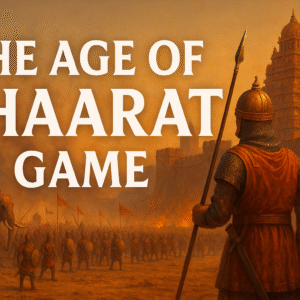Table of Contents
Why Content Creator Jobs Are the New-Age Dream Careers
Not too long ago, telling someone you wanted to be a content creator would raise eyebrows. Today, it raises questions like “What’s your niche?” or “How many followers do you have?” The explosion of the internet, social media platforms, and monetization models has made content creator jobs not just a possibility—but a serious profession.
In 2018, only a handful of people in India were pursuing content creation full-time. By 2024, that number crossed over 2 million, and the global figure is over 50 million creators, according to a study by SignalFire. This shift signals a deeper cultural change. People want careers that offer flexibility, creativity, and ownership—and content creator jobs deliver exactly that.
The Real Definition of Content Creator Jobs
Let’s clear one thing right away: content creator jobs are not just about making YouTube videos or Instagram reels. A content creator can be:
- A blogger writing in-depth posts
- A video editor shaping raw footage into storytelling gold
- A meme designer with viral potential
- A podcast host interviewing experts
- A TikToker educating in 60 seconds
- A technical writer explaining AI in simple terms
These roles are unified by one goal: creating engaging content for an audience, often with a monetization model tied to it. And today, businesses are hiring creators just like they hire developers or marketers.
In fact, LinkedIn reported a 27% year-over-year increase in job postings that mention content creation as a required skill.
The Scope of Content Creator Jobs in 2025
In 2025, the market for content creator jobs is larger than ever. Thanks to the rise of creator economy platforms like Substack, YouTube Shorts, and even Instagram’s paid subscriptions, creators now have dozens of income streams. Brands are shifting their marketing budgets from traditional TV commercials to influencer collaborations.
Consider this: A mid-level YouTuber with 100K subscribers earns anywhere between ₹50,000 to ₹1,50,000 per month through sponsorships, ads, and merchandise. A meme creator with 1 million Instagram followers can charge ₹40,000–₹80,000 per brand shoutout. A podcast with just 5,000 listeners per episode can make decent income via affiliate marketing and community memberships.
Let me share my story briefly. I started writing tech articles in my village during my Class 10 days. I didn’t even own a laptop then—just a basic smartphone. Fast forward three years, and my blogs and content channels now earn me enough to fund my education and even help my family. That’s the beauty of content creator jobs—they democratize opportunity.
Key Platforms Where Content Creator Jobs Thrive
To excel in content creator jobs, you need to know where your work will be seen, shared, and appreciated. Here are some of the main platforms and how they support content creation:
- YouTube: Ideal for long-form videos, monetized via ads, memberships, and super chats.
- Instagram & TikTok: Great for short videos, reels, and memes. Monetized via brand collaborations, product tagging, and paid reels.
- LinkedIn: A rising star for professional content creators. Great for writing, B2B content, and thought leadership.
- Medium/Substack: For writers and journalists. Subscription-based revenue or partner programs.
- Patreon/Ko-fi: Platforms where fans directly support your content via donations or memberships.
Some creators even go multi-platform: a person might record a podcast, turn it into a blog post, repurpose it as Instagram reels, and email it to a list of subscribers.
These platforms don’t just enable visibility—they create jobs. And every content creator becomes a mini media company.
Content Creator Jobs Inside Companies vs. Freelance Roles
There are two types of content creator jobs:
- Freelance / Independent Creator
These are people who build their own brand and content channel. Examples: YouTubers, independent bloggers, meme page owners, or newsletter writers. - Company-Hired Creators
These creators work inside brands or agencies. They write content for clients, shoot videos, design infographics, or manage social media accounts. Their titles may include “Content Strategist,” “Social Media Manager,” or even “Chief Meme Officer.”
Both types come with pros and cons.
| Type | Pros | Cons |
| Independent Creator | Full freedom, passive income potential | Irregular income, platform dependency |
| Company Role | Stable salary, mentorship, work-life balance | Limited creative freedom, slow growth |
Companies like Zomato, Cred, and Netflix India now have full-time meme creators and video hosts. They understand that content is branding.
Skills You Need to Get Content Creator Jobs
No degree is necessary for content creator jobs—but skills are a must. Here’s what you’ll need:
- Content Writing & Storytelling: Whether it’s a caption or a case study, good writing hooks the audience.
- Video Editing & Filming: Shorts, reels, long-form—you need basic video skills.
- SEO & Analytics: Know how to make content discoverable via keywords, trends, and performance tracking.
- Social Media Understanding: Timing, platform trends, hashtags—it all matters.
- Graphic Design Basics: Canva, Photoshop, or Illustrator for creating thumbnails and visuals.
Soft skills like consistency, curiosity, adaptability, and audience understanding are equally important.
In my journey, I learned the basics of blogging and video editing from free YouTube channels. Tools like Canva, CapCut, and Notion helped me structure content. Eventually, I started offering freelance services, which led to paying gigs. That’s how my career started—without any paid course.
How Much Can You Earn from Content Creator Jobs?
Let’s talk real numbers. How much do content creator jobs actually pay?
The answer varies wildly depending on niche, platform, audience size, and your monetization model. But to give you a ballpark figure, here’s what creators can earn in different categories:
| Role Type | Beginner (0-6 months) | Intermediate (6-18 months) | Expert (2+ years) |
| YouTuber (10K to 100K subs) | ₹5,000 ₹30,000 | ₹30,000-₹1,00,000 | ₹1L₹5L+ |
| Instagram Influencer | ₹2,000 ₹25,000 | ₹25,000- ₹70,000 | ₹70K -2L+ |
| Blogger | ₹1,000 ₹10,000 | ₹10K- ₹50K (Ads, Affiliates) | ₹50K -₹3L+ |
| Podcast Host | ₹1,000 -₹15,000 | ₹15K-₹60K+ | ₹1L-₹5L+ |
| Full-time in-company creator | ₹15,000-₹30,000 | ₹30K-₹70K | ₹70K -₹1.5L+ |
Average Earnings (Monthly Estimates)
Note: These are just indicative ranges. Viral content or niche domination can lead to much higher returns.
Some creators also earn through:
- Affiliate marketing
- Selling digital products (like eBooks, presets, or courses)
- Paid community access (via Discord, Telegram, or Patreon)
- Sponsored content and brand partnerships
A 2023 report from Influencer Marketing Hub found that 78% of creators earn through multiple income streams. That’s the beauty of this field: it rewards creativity and diversification.
Real Case Studies of Successful Content Creators
Let’s explore a few real stories that bring content creator jobs to life.
Case Study 1: Komal Pandey – Fashion & Self-love
Komal started as a fashion blogger but later transitioned to video storytelling. Today, she’s one of India’s most recognized Instagram content creators. Her work is a mix of fashion, art direction, and bold personal expression.
Her income now includes:
- Brand collaborations (₹1L+ per reel)
- YouTube earnings
- Public speaking and hosting gigs
What makes her success interesting is how she stayed authentic even while scaling.
Case Study 2: Finance With Sharan – Educating Through Humor
Sharan Hegde made finance entertaining. His short-form Instagram and YouTube videos simplify complex money topics. Within 2 years, he grew to millions of followers and built a team.
He earns via:
- Sponsored videos
- Online workshops
- Finance consulting for startups
It shows that even “boring” niches can explode with the right content strategy.
Case Study 3: My Personal Journey – From Village Blogger to Digital Hustler
Let me get personal for a moment. I started blogging as a hobby. No laptop, just a burning curiosity and a second-hand smartphone. I wrote articles on tech tools and money-making ideas. I slowly learned SEO, thumbnail creation, and storytelling.
Today, my blog has affiliate earnings, I run 3 social media channels, and I help others set up their content strategy. I’m not rich (yet), but I’m self-employed—and proud of it.
That’s the power of content creator jobs. They reward effort, not just education.
Where to Find Content Creator Jobs: Best Platforms & Websites
If you’re looking for content creator jobs (especially the salaried or freelance kind), here’s where to start:
Freelance Sites:
- Upwork: Great for content writing, editing, and video work.
- Fiverr: Niche gigs like voiceovers, thumbnails, or meme creation.
- Freelancer.com: Competitive, but good for recurring projects.
Job Portals:
- LinkedIn: Search for “Content Creator” or “Social Media Executive.”
- Internshala: Ideal for students and beginners.
- AngelList: Startup jobs that value creative content.
- Indeed & Naukri: General content-related job listings.
Creator Platforms:
- YouTube Partner Program
- Meta Creator Marketplace
- Ko-fi & BuyMeACoffee
Tip: Always have a portfolio ready, even if you’re just starting out.
Building a Strong Content Creator Portfolio
Whether you’re applying to a company or freelancing, your portfolio matters more than your resume.
What to Include:
- Your best-performing content (with metrics like views or engagement)
- Before/After content samples (for editors or graphic designers)
- Case studies (e.g., “How I helped a brand grow Instagram by 500%”)
- Tools used (Photoshop, CapCut, Canva, etc.)
Even if you’re a beginner, create sample projects:
- A 30-second reel explaining something
- A mock blog post on a trending topic
- A redesigned Instagram carousel
The portfolio is your proof of work—and it speaks louder than words.
Top Mistakes New Creators Should Avoid
While exploring content creator jobs, beginners often make avoidable mistakes:
- Chasing virality over value: Going viral is great, but consistent value builds a career.
- Ignoring analytics: Not tracking what works is like shooting in the dark.
- Burning out: Posting daily doesn’t work if you crash after a month. Pace yourself.
- Copying others blindly: Inspiration is fine. But originality is your asset.
- Not networking: Collaborate, comment, and connect—social media is social for a reason.
I’ve made most of these mistakes myself. Early on, I spent 3 weeks making one perfect video. It flopped. Then I uploaded a raw, honest vlog that unexpectedly went semi-viral. Lesson? Consistency > perfection.
The Future of Content Creator Jobs: What’s Next?
The future of content creator jobs is evolving faster than ever. With the rise of AI tools, Web3, and creator economy startups, the next five years could look very different.
Here Are Key Trends to Watch:
- AI-Assisted Creation: Tools like ChatGPT, D-ID, and RunwayML are making it easier to produce high-quality content with minimal effort. But creators who blend AI with human creativity will stand out.
- Niche Creators Will Rule: Micro-creators (with 5K–50K followers) are getting more deals per follower than macro-influencers. Brands are preferring engagement over just big numbers.
- Live & Community-Based Content: Platforms like Discord, Telegram, and even Substack are becoming community hubs. Engagement-focused content will dominate the next wave of creator monetization.
- Web3 & NFTs for Creators: Blockchain is introducing new ways to monetize content. Think NFTs for access, decentralized ownership, and direct creator support—without platform middlemen.
In 2024, YouTube Shorts creators earned over $125 million collectively from ad revenue sharing. By 2026, that number is expected to double as platforms battle for creator loyalty. Content creator jobs are no longer just creative—they are tech-powered.

Frequently Asked Questions (FAQs)
1. Do I need a degree to apply for content creator jobs?
No. Most content creator jobs value skills, portfolio, and consistency over formal degrees. If you can prove you know what you’re doing, that’s enough.
2. Can I get full-time content creator jobs?
Absolutely. Many companies now hire full-time creators for in-house content, marketing, and branding. Job titles may include Content Specialist, Digital Storyteller, or Video Editor.
3. How long does it take to make a living from content creator jobs?
It varies. Some earn in 3 months, others in 3 years. But if you’re consistent and learn from feedback, 6–12 months is a reasonable timeline to see income.
4. What’s the safest platform to start on?
Start where you’re most comfortable. Instagram is great for visual content, YouTube for videos, and Medium/Substack for writing. Focus on one platform first and expand later.
5. What’s better—freelance or working in a company?
Both have pros and cons. Freelance = freedom, but instability. Company = stability, but less creative control. Try both if you can and see what fits.
The Creator Economy Belongs to the Brave
If you’re still wondering whether content creator jobs are worth it, let me say this: there has never been a better time in history to earn from your creativity.
This isn’t just a job trend—it’s a movement.
You don’t need permission from anyone to start. You don’t need to be in a metro city. You don’t need fancy gear. All you need is to start.
Your voice matters. Your ideas can entertain, educate, or inspire someone across the globe.
Start that blog. Film that first reel. Create that meme. Design that graphic. Don’t wait for perfect.
Because content creator jobs are not just jobs—they are freedom in pixels.
How to Stand Out in a Competitive Content Creator Job Market
With so many people jumping into the creator space, you might wonder: how do I stand out? The answer is surprisingly simple: be real, be helpful, be consistent.
Here’s what sets successful creators apart from the rest:
1. Personal Branding
Your content is your voice—but your brand is your identity. The best content creator jobs often go to people who have a recognizable style or a unique way of delivering content. Ask yourself:
- What tone do you naturally use—funny, educational, motivational?
- What themes or subjects do you always return to?
- How do you visually represent yourself (colors, logo, outfits)?
Personal branding helps people remember you. Whether you’re an anime reviewer or a crypto educator, people need to associate your content with your name.
2. Consistency Over Complexity
Many creators burn out trying to do everything—daily posts, complicated editing, switching platforms every month. Instead, the ones who land long-term content creator jobs usually do one thing: show up consistently.
You don’t have to go viral every day. But post once a week, write one good blog a month, or upload two short reels. That’s it. Over time, consistency builds trust—and trust builds audiences.
3. Storytelling Skills
Even if you’re creating technical or educational content, don’t underestimate the power of storytelling. People remember stories more than facts. This blog you’re reading? It’s filled with facts—but wrapped in stories. That’s what keeps readers like you engaged.
Next time you post something, ask:
- Can I add a personal example?
- Can I make it relatable with real-life metaphors?
- Can I connect the topic to my own journey?
That’s how you humanize your work—and content creator jobs are all about being human in a digital space.
Building a Sustainable Career: More Than Just Followers
Followers are not everything. You can have 10,000 followers and be broke, or 1,000 followers and be thriving. The real goal of content creator jobs is sustainability—earning enough to live well, create freely, and grow steadily.
Here are ways to build a career, not just a content streak:
1. Diversify Your Income Streams
Once your audience trusts you, don’t rely on just ad revenue or one brand deal. Add:
- Affiliate marketing (Amazon, Flipkart, niche programs)
- Sell digital products (ebooks, presets, templates)
- Host paid workshops or webinars
- Launch a paid newsletter or premium Discord
The most successful people in content creator jobs have at least 3 income sources.
2. Treat It Like a Business
Use tools like:
- Notion or Trello for planning
- Google Analytics and TubeBuddy for tracking
- PayPal or Stripe for payments
- Canva Pro or CapCut for content design
And yes—file your taxes, track your income, and reinvest in better tools or learning. This turns your passion into a profession.
3. Collaborate with Other Creators
Most people see other creators as competition. Smart creators see them as collaborators.
- Collab on content
- Shout each other out
- Share resources and tips
Many content creator jobs come from inside the creator network. Someone might refer you to a brand or include you in a paid campaign just because you helped them once.
Mindset Matters: What No One Tells You About Being a Creator
This is the part no job post will tell you—but I will.
Content creator jobs can be emotionally draining. You’ll face:
- Negative comments
- Days with zero engagement
- Burnout from editing till 3AM
- Imposter syndrome (especially when you compare yourself with bigger creators)
So here’s my honest advice:
- Take breaks. Rest isn’t laziness. It’s strategy.
- Unfollow noise. If someone’s content makes you feel “less than,” mute it.
- Celebrate progress. Your first 100 views matter just as much as your first 10,000.
- Talk to your audience. Treat them like humans, not numbers. They’ll feel it.
If you can survive the first 6–12 months, you’ll build resilience. And that’s what makes you unstoppable in the world of content creator jobs.
Should You Go for Content Creator Jobs in 2025?
If you’re someone who enjoys telling stories, solving problems, or entertaining people—and if you’re willing to be patient and consistent—then yes, content creator jobs could be your perfect fit.
No matter your background, city, or age—this field is open to all. You don’t need a degree. You don’t need celebrity connections. You don’t even need perfect English. You just need to start, stay real, and never stop learning.
The next big content creator in the world could be someone reading this blog right now.
Maybe… it’s you.




Leave a Reply